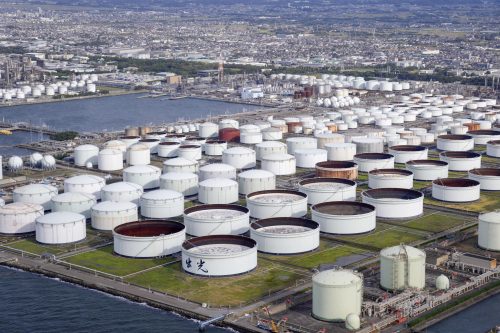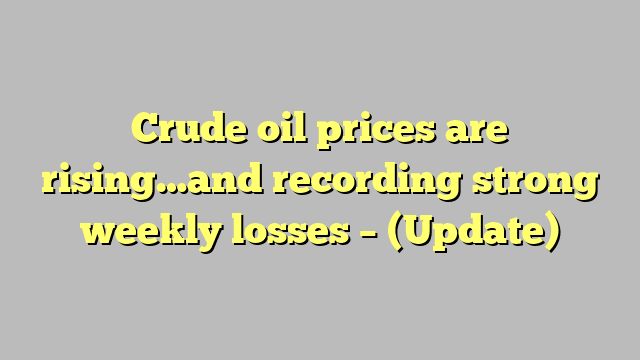Crude oil prices rose, at the end of trading today, Friday, April 21 (2023), in an attempt to reduce the losses incurred during the previous two sessions.
Despite this, the oil markets recorded strong weekly losses, with increasing uncertainty about the economy and interest rates, as the increase in US gasoline stocks raised concerns about a recession and a slowdown in global demand for crude.
The weekly report of Baker Hughes showed that oil rigs in the United States increased by 3 during the past week, to record the first rise in 4 weeks.
Crude oil prices today
At the end of the session, benchmark Brent crude futures – for June 2023 delivery – rose 0.7%, to record $81.66 a barrel.
West Texas Intermediate crude futures – for June 2023 delivery – increased by 0.7%, recording $ 77.87 a barrel, according to what was seen by the specialized energy platform.
Crude oil prices ended their trading, yesterday, Thursday, April 20, declining by more than 2%, for the second day in a row, recording their lowest levels in 3 weeks.
The two benchmarks (Brent and West Texas Intermediate) fell by 5.4% and 5.5%, respectively, during the week ending today.
Oil market conditions
Losses were reversed in early trade on Friday after news that the economic recovery in the euro-zone had picked up pace this month.
Surveys showed that demand rose in the dominant services sector in the European Union, offsetting a growing slowdown in manufacturing.
“The economy appears to be bouncing back from a weak winter at the moment, but manufacturing weakness remains a concern and dampens the recovery,” ING Economics said in a note.
British businesses also reported a rebound in activity this month and the slowest input cost inflation in more than two years, an industry survey showed on Friday, but price pressures remain strong enough for the Bank of England to raise interest rates again next month.
“At the heart of the current bout of price jitters are concerns that higher interest rates could affect economic growth,” said Stephen Brennock, analyst at PVM Oil Brokerage.

Oil price analysis
“Market sentiment remained bearish after weak US economic data, along with expectations of a rate hike, raised concerns about a recession that could dampen oil demand,” said Hiroyuki Kikukawa, President of NS Trading, a unit of Nissan Securities.
He added, “WTI is expected to trade in a $75-$80 range for the next week as investors try to figure out whether US gasoline demand will pick up in the summer driving season, and whether Chinese oil demand will really pick up in the half.” second of the year.
interest rates
Economic data showed a rise in weekly jobless claims, last week; Which indicates that the labor market in the United States may start to show signs of slowing down; where the effect of a delay in raising multiple interest rates by the Federal Reserve takes hold; This increases concerns about slowing fuel demand.
Analysts from the National Australia Bank said: “We relate the volatility of crude oil prices in the near term to the market situation before the interest rate increase.”
Analysts added: “The Federal Reserve, the Bank of England and the European Central Bank meet in the first week of May, and we expect continued downward pressure on crude oil prices during these meetings.”
demand for oil
Data from the Energy Information Administration showed, on Wednesday, that US crude oil inventories fell, last week, more than expected, as refinery operations and exports rose, while gasoline stocks jumped unexpectedly amid disappointing demand.
Meanwhile, a Reuters survey showed that China may reduce refined oil derivatives exports quotas in a second batch for 2023 with improved domestic demand, while the need to boost its economy through oil product exports recedes.
On the supply front, oil loadings from Russia’s western ports in April are likely to rise to the highest level since 2019, above 2.4 million barrels per day, despite Moscow’s pledge to cut production, according to trading and shipping sources.
related topics..
Also read..

Leave a Reply